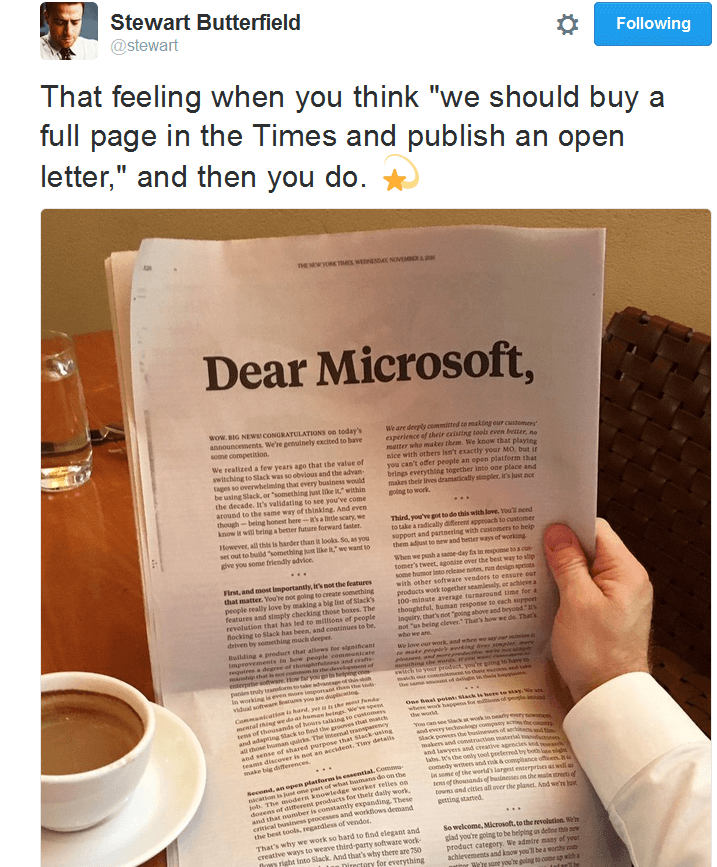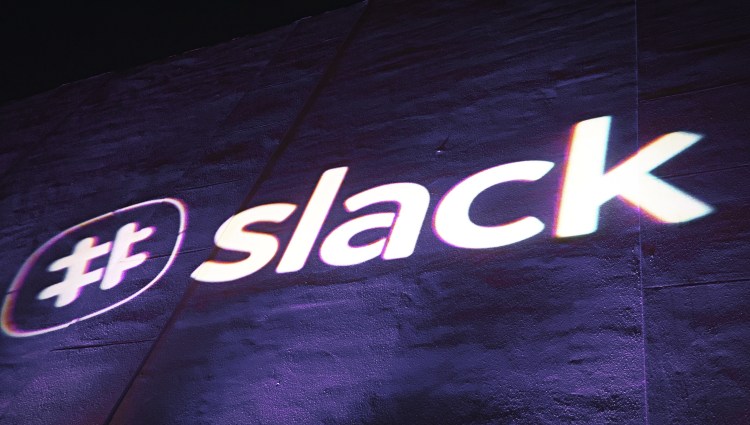As Microsoft prepared to launch its much-touted Slack rival later today, Slack went to some lengths to explain what its competitor will need to do to succeed in the team collaboration tool realm.
The San Francisco-based startup, funded to the tune of $540 million, has taken out a full-page “Dear Microsoft” ad in the New York Times today, before Microsoft had officially announced its intentions. Slack cofounder Stewart Butterfield posted this to Twitter earlier today.

“Wow. Big news! Congratulations on today’s announcements. We’re genuinely excited to have some competition,” the letter begins, before going on to outline what Microsoft will need to do if it’s to emulate Slack’s success in the business communications realm.
June 5th: The AI Audit in NYC
Join us next week in NYC to engage with top executive leaders, delving into strategies for auditing AI models to ensure fairness, optimal performance, and ethical compliance across diverse organizations. Secure your attendance for this exclusive invite-only event.
The letter highlights three areas that Slack has identified as the keys to its traction, and begins by pointing out that it won’t be enough for Microsoft to simply copy Slack. “You’re not going to create something people really love by making a big list of Slack’s features and simply checking those boxes,” the letter says. “The revolution that has led to millions of people flocking to Slack has been, and continues to be, driven by something much deeper.”
Notably, Slack attributes part of its success to its being an open platform that integrates into third-party services, something it says Microsoft doesn’t have a great track record with. “We know that playing nice with others isn’t exactly your MO [modus operandi], but if you can’t offer people an open platform that brings everything together into one place and makes their lives dramatically simpler, it’s just not going to work,” the letter continues.
At any rate, if you don’t have easy access to a copy of the New York Times, Slack has reprinted its open letter to Microsoft here. The move is actually a smart marketing initiative from the company, which has cleverly inserted itself into the conversation as Microsoft prepares to launch what’s expected to be called “Microsoft Teams” this morning.

